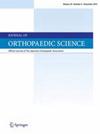Two types of cannulated screw fixation based on Letenneur classification for the treatment of Hoffa fracture: A finite element analysis
IF 1.4
4区 医学
Q3 ORTHOPEDICS
引用次数: 0
Abstract
Purpose
A finite element analysis was performed to simulate the biomechanical differences between anterior–posterior (AP) direction and posterior-anterior (PA) direction placement of two cannulated screws in Hoffa fractures.
Methods
Computed tomography images of an healthy male volunteer were used to simulate Letenneur Ⅰ, Ⅱa, Ⅱb, Ⅱc, Ⅲ Hoffa fractures, and two groups of screw internal fixation models were constructed. Two 6.5 mm cannulated screws were implanted parallel in the AP direction or the PA direction. The biomechanical test was performed to determine the displacement, stress distribution, and peaks in the distal femur and cannulated screws in 10 models.
Results
The displacement distribution and peak values of the distal femur and cannulated screws in both groups were similar, and displacement increasing as the load increased. The stress distribution in the distal femur was similar between the two groups, with stress mainly concentrated on both sides of the fracture line, the posterolateral and anterior aspects of the femoral shaft. The peak stress in the PA group of the Letenneur type Ⅱb was significantly higher than that in the AP group, and the stress in the distal femur increased with increasing load. The stress distribution in the cannulated screws of Letenneur Ⅰ, Ⅱa, Ⅱb, and Ⅲ, was similar, but differences are observed between the two groups in type Ⅱc. The stress in the cannulated screws increased with increasing load, and the peak values in the PA group are significantly higher than those in the AP group.
Conclusion
The mechanical stability of the two screw insertion methods is similar. Inserting screws from anterior to posterior can reduce the stress on the distal femur and cannulated screws, and also minimize the dissection of the posterior soft tissues. Therefore, inserting screws from anterior to posterior is a more recommended surgical approach for Hoffa fractures.
基于Letenneur分类的两种空心螺钉内固定治疗Hoffa骨折的有限元分析。
目的:通过有限元分析模拟两枚空心螺钉在Hoffa骨折中前后(AP)方向和前后(PA)方向置入的生物力学差异。方法:采用健康男性志愿者计算机断层图像模拟LetenneurⅠ、Ⅱa、Ⅱb、Ⅱc、ⅢHoffa骨折,建立两组螺钉内固定模型。分别在AP方向或PA方向平行植入2枚6.5 mm空心螺钉。对10个模型进行生物力学测试,以确定股骨远端和空心螺钉的位移、应力分布和峰值。结果:两组股骨远端和空心螺钉的位移分布和峰值相似,且位移随载荷的增加而增加。两组股骨远端应力分布相似,应力主要集中在骨折线两侧、股骨干后外侧和前侧。Letenneur型Ⅱb的PA组峰值应力显著高于AP组,且股骨远端应力随负荷增加而增加。LetenneurⅠ、Ⅱa、Ⅱb和Ⅲ空心螺钉的应力分布相似,但在Ⅱc型中,两组之间存在差异。空心螺钉内的应力随载荷的增加而增加,且PA组的峰值显著高于AP组。结论:两种螺钉置入方法的力学稳定性相似。从前向后插入螺钉可以减少股骨远端和空心螺钉的应力,也可以最大限度地减少后部软组织的剥离。因此,从前向后置入螺钉是治疗Hoffa骨折更推荐的手术入路。
本文章由计算机程序翻译,如有差异,请以英文原文为准。
求助全文
约1分钟内获得全文
求助全文
来源期刊

Journal of Orthopaedic Science
医学-整形外科
CiteScore
3.00
自引率
0.00%
发文量
290
审稿时长
90 days
期刊介绍:
The Journal of Orthopaedic Science is the official peer-reviewed journal of the Japanese Orthopaedic Association. The journal publishes the latest researches and topical debates in all fields of clinical and experimental orthopaedics, including musculoskeletal medicine, sports medicine, locomotive syndrome, trauma, paediatrics, oncology and biomaterials, as well as basic researches.
 求助内容:
求助内容: 应助结果提醒方式:
应助结果提醒方式:


